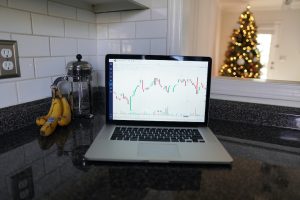Forex trading, also known as foreign exchange trading, is the process of buying and selling currencies with the aim of making a profit. The forex market is the largest financial market in the world, with a daily trading volume of over $5 trillion. Forex trading is considered to be derivative in nature because it is based on the value of other assets.
In financial markets, a derivative is a financial instrument whose value is derived from an underlying asset. The underlying asset can be a stock, bond, commodity, or currency. Derivatives are used to manage risk, hedge against potential losses, or speculate on future price movements. Forex trading is a type of derivative trading because the value of currency pairs is derived from the exchange rate of the underlying currencies.
Forex trading is a highly leveraged financial product that allows traders to control a large position with a small amount of capital. This is possible because forex brokers offer leverage, which is the ability to trade with borrowed funds. The amount of leverage offered by a broker varies, but it can be as high as 500:1. This means that a trader can control a position worth $500,000 with only $1,000 in their trading account.
One of the advantages of forex trading is that it is accessible to anyone with an internet connection. Forex trading can be done from anywhere, at any time, making it a popular choice for traders who want to work from home or while traveling. Forex trading is also highly liquid, meaning that there is always a buyer and seller for every currency pair.
Forex trading is a speculative investment, and as such, it carries a high degree of risk. It is important for traders to have a solid understanding of the forex market and the factors that influence currency prices. Traders need to be able to analyze economic data, monitor news events, and understand technical analysis in order to make informed trading decisions.
One of the key aspects of forex trading is the use of technical analysis. Technical analysis is the study of price charts and indicators to identify patterns and trends in the market. Traders use technical analysis to determine entry and exit points for trades, as well as to set stop-loss and take-profit levels.
Forex trading is also heavily influenced by macroeconomic factors such as interest rates, inflation, and geopolitical events. Central banks play a significant role in the forex market by setting interest rates and implementing monetary policy. Economic data releases such as GDP, employment figures, and inflation reports can also have a significant impact on currency prices.
In conclusion, forex trading is a derivative financial product that allows traders to speculate on the value of currency pairs. Forex trading is highly leveraged, accessible, and liquid, making it a popular choice for traders. However, forex trading is also highly speculative and carries a high degree of risk. Traders need to have a solid understanding of the forex market and the factors that influence currency prices in order to make informed trading decisions. Technical analysis and macroeconomic factors such as interest rates and economic data releases are key factors in forex trading.






